The Develop 3D Live event took place at Warwick Arts Center, UK earlier this week. Now in its 6th year, organizers say that the number of visitors to this product development and design technology conference and show was in excess of 1,600.
3D Printing Industry was among the attendees, and spoke to a large number of the companies exhibiting and attending.
More than 70 companies – including many involved in the 3D printing industry – attended the free event. On the show floor, Faro, HP, Artec3D, Polygonica, Onshape, Roland DG, Proto Labs, Autodesk and others joined vendors targeting the product development and design market.

A section of the speaking program was dedicated to 3D printing and the trifecta of materials, machines and software was addressed by 5 3D printing industry experts.
Stratasys on functional 3D printed materials
Zehavit B. Reisin, Vice President, Materials Business Unit at Stratasys Ltd gave a presentation on functional 3D printed materials.
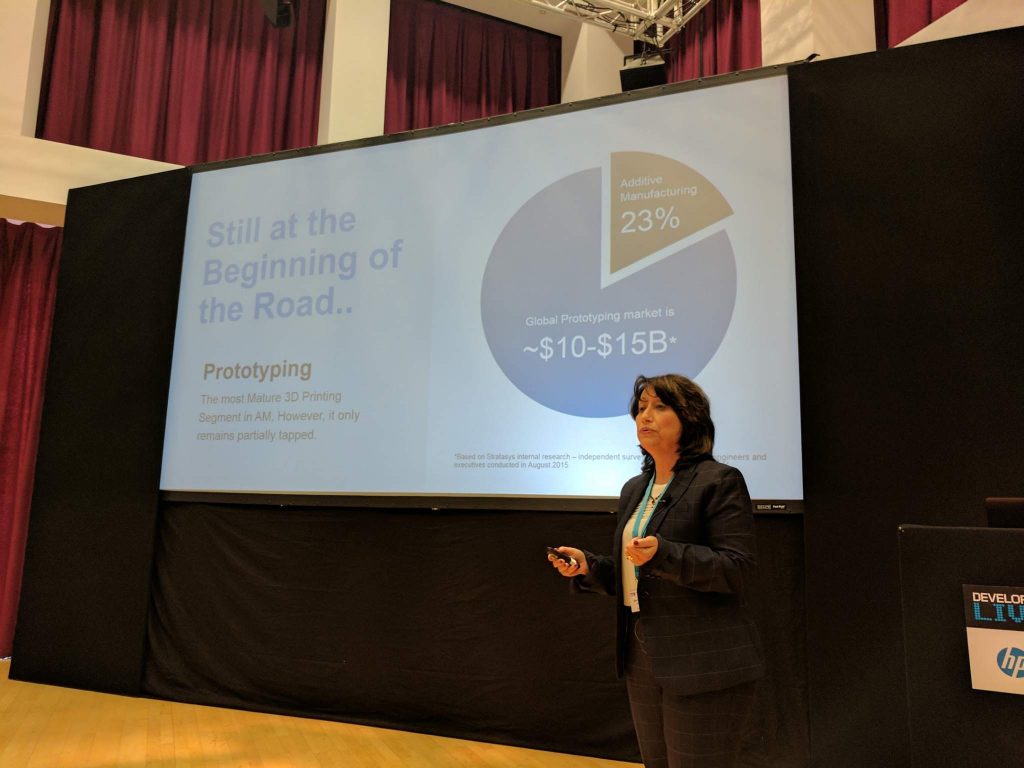
Research conducted by Stratasys found that 3D printing has less than 10% penetration in design workshops. The F123 series announced earlier this year, is in part, an attempt to address this currently under-served market segment.

Reisin recognises that, “additive manufacturing is addictive” and once new users begin to explore the possibilities of 3D printing, that is likely to only be the start of a long journey.
The theme for 2017/18 at Stratasys is “no more compromises,” this means functional materials such as FDM utilized Nylon 12CF and extending the Agilus30 family beyond Connex range of 3D printers.
And of course, Stratasys now also offer 3D printing with PLA.
nTopology: intelligent design tools for additive manufacturing
Bradley Rothenberg, cofounder and CEO at nTopology, spoke about how more intelligent design tools are required, and the solution his company will bring to market later this year. Rothenberg also produced a deceptively light, and finely detailed, nTopology designed 3D printed titanium part. When I first picked up the 3D print I mistakenly thought it was a polyamide based material like EOS Alumide, given its lightness.

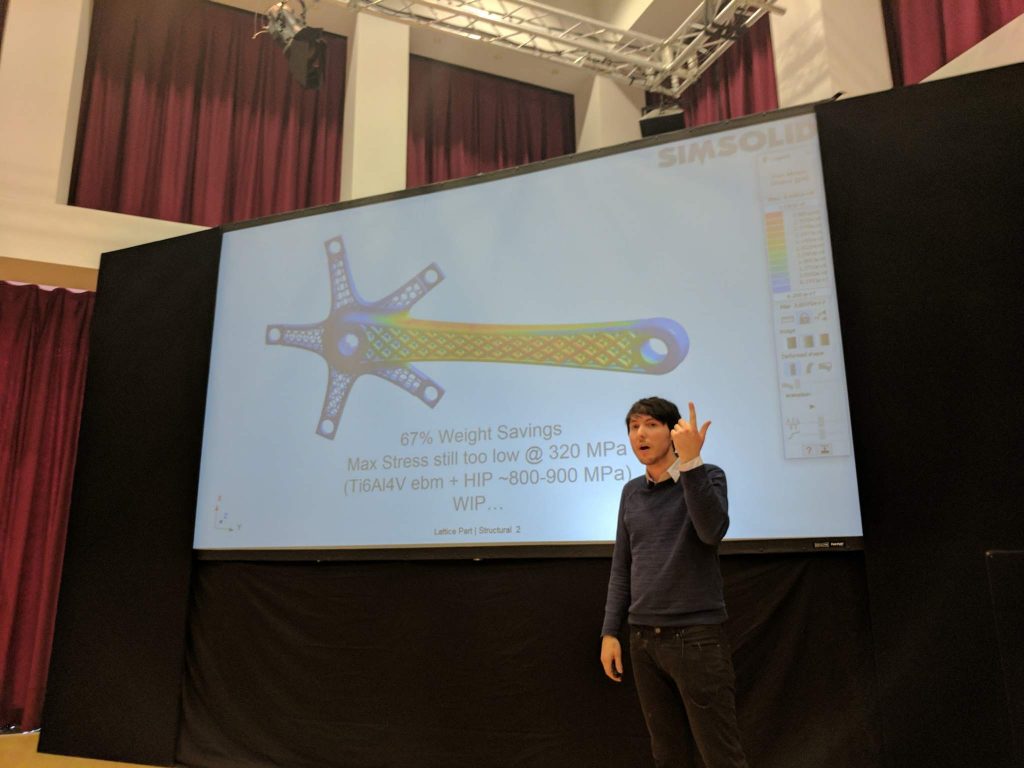
nTopology underwent went a soft launch last month. To explain the value of nTopology Rothenberg gave a brief overview of parametric design, “making one thing drive another,” and generative design, “1+1=3.“
The software offered by nTopology mixes both parametric and generative design with a “combination of both constraints and rules.” To design the complex lattices and other patterns nTopology use both “graph and volumetric representation.” The resulting LTCX, nTopology’s open source portable & lightweight file specification for lattice structures, uses only 5% of the memory space compared to the same file in STL format.

We visited nTopology at their New York HQ last year and you can learn more about the software here.
Intrinsys take on challenge of residual stress
Dr. Auday Al-Rawe from Intrinsys spoke about how simulation driven additive manufacturing can be used for thermal stress analysis in powder bed 3D printing.
According to Dr. Auday the primary challenge facing those who design for additive manufacturing is, “the geometry design will be different to the manufactured part due to the residual stresses.“
Intrinsys are working on a solution that uses process parameter optimization and simulation to understand and optimization metal additive manufactured parts.
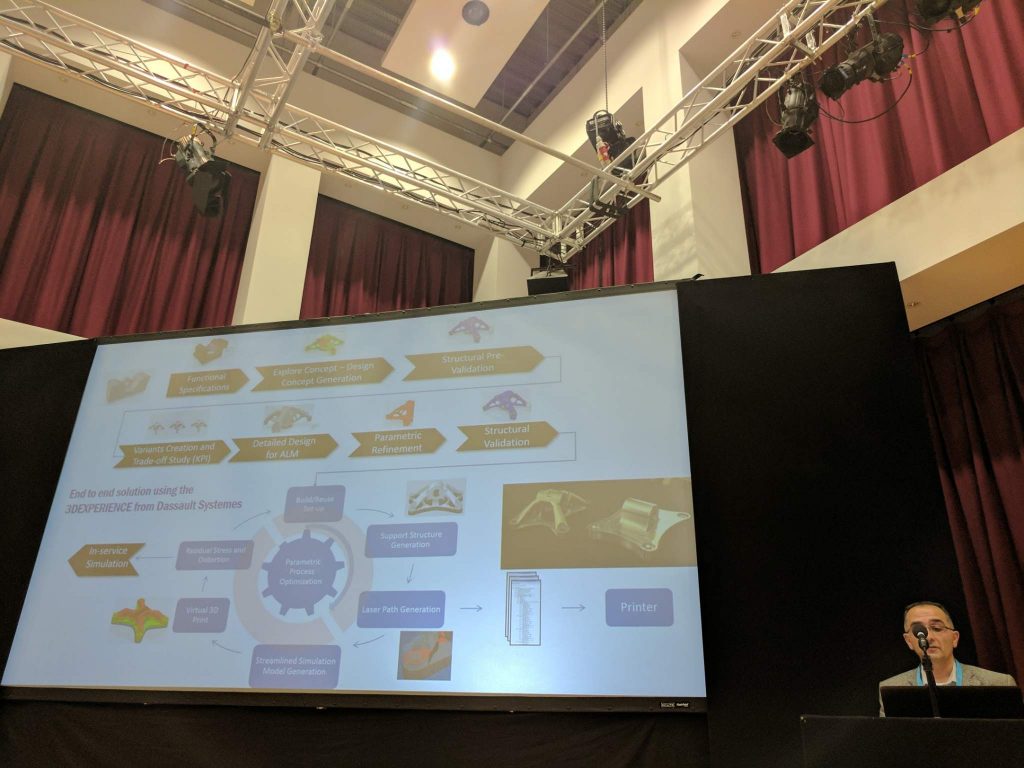
Renishaw additive manufacturing breakthroughs
Renishaw‘s Suzanne Venables-Wood shared her knowledge as AM Software Group Training Co-ordinator in a presentation that took in recent breakthroughs at the metal additive OEM and also challenges relating to process parameters.
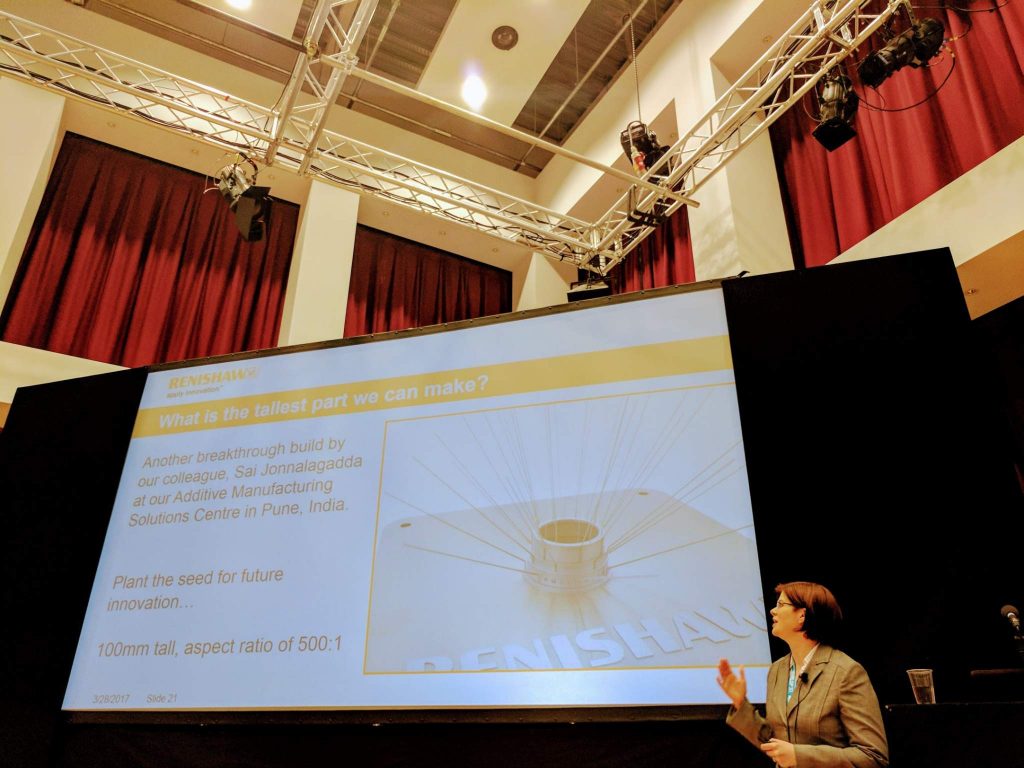
Venables-Wood explained five process parameters of the modulated lasers used by Renishaw. Point distance, exposure time, laser powers, spot size, and hatch distance. Examples of optimal settings included observations that melt pools should overlap by one third to create a constant melt and that more laser power doesn’t always mean faster 3D printing, rather that a wider materials palette is available.
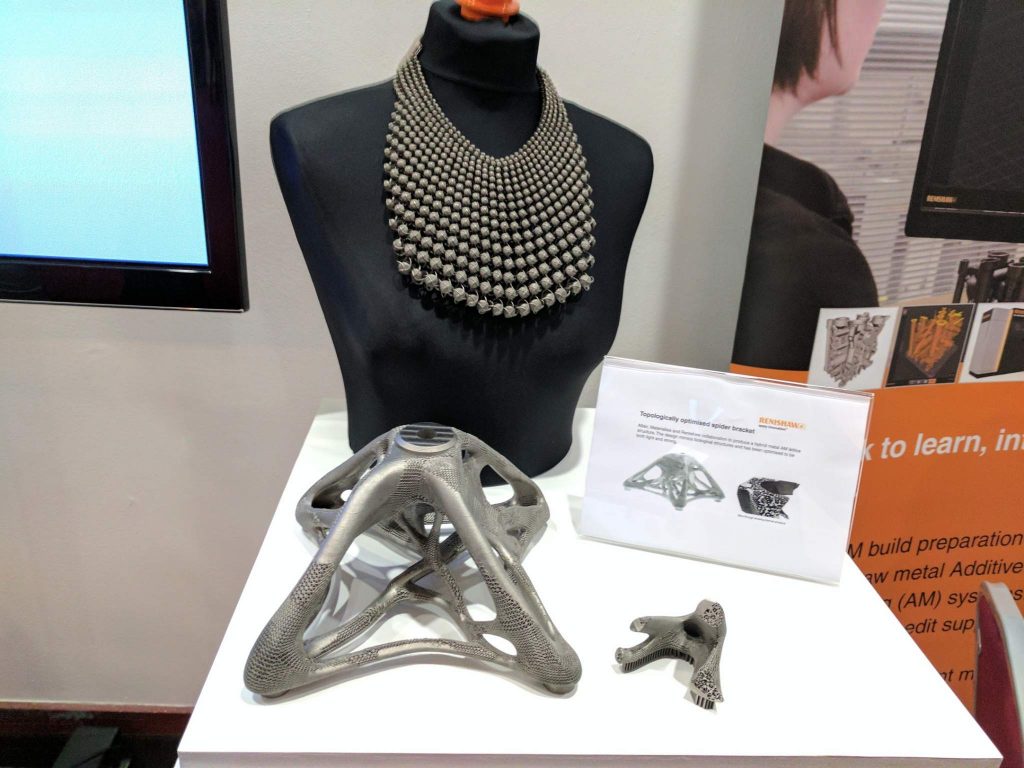
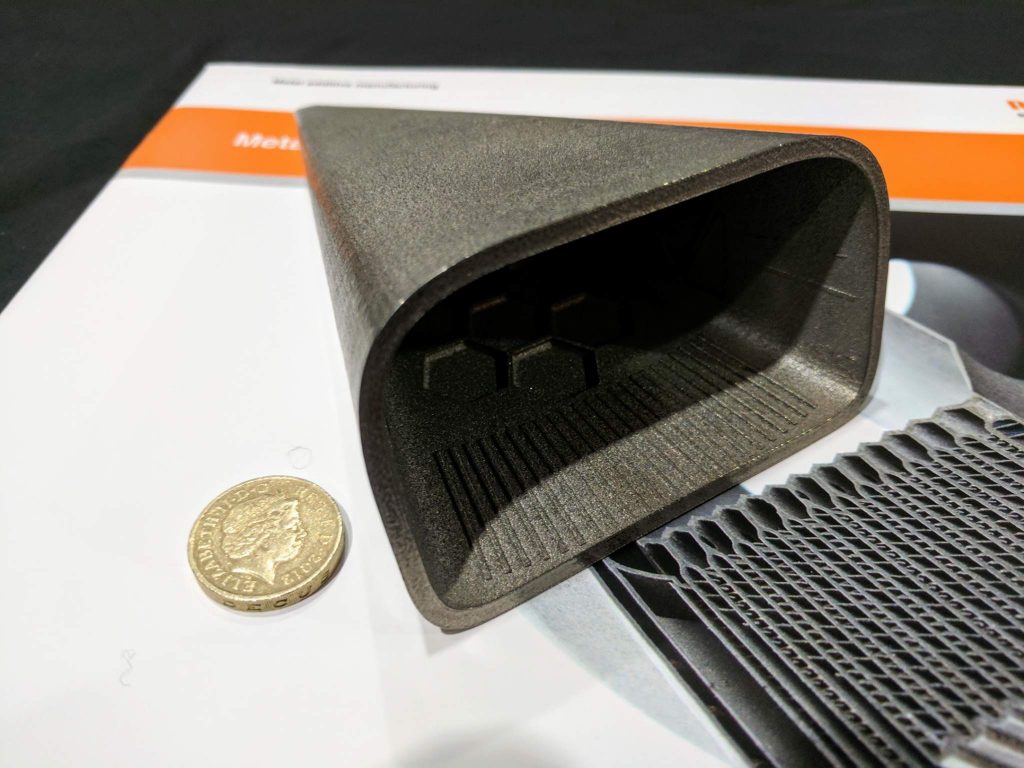
At the Renishaw booth in the Develop 3D expo, Venables-Wood showed me a core metal foam 3D printed in titanium and designed with betatype software. The foam displayed an incredibly fine strut thickness and was manufactured used point-to-point exposure from a modulated laser and a soft wiper for the powder bed. Renishaw are currently seeking applications for the lightweight, yet strong, core metal foam.

Renishaw also announced another recent breakthrough, and breaking of one of the seemingly written in stone rules of 3D printing: angles over 45 degrees require supports.
As Marc Saunders, Director of Renishaw’s Global Solutions Centers says, “rules are there to be broken.” During her presentation Venables-Wood showed a photo taken at Renishaw’s AMSC in Pune, India with prints ranging from 0.2mm diameter and 100mm tall, a 100mm long strut and 0.5mm diameter at 30 degrees to the horizontal: angled towards the wiper.
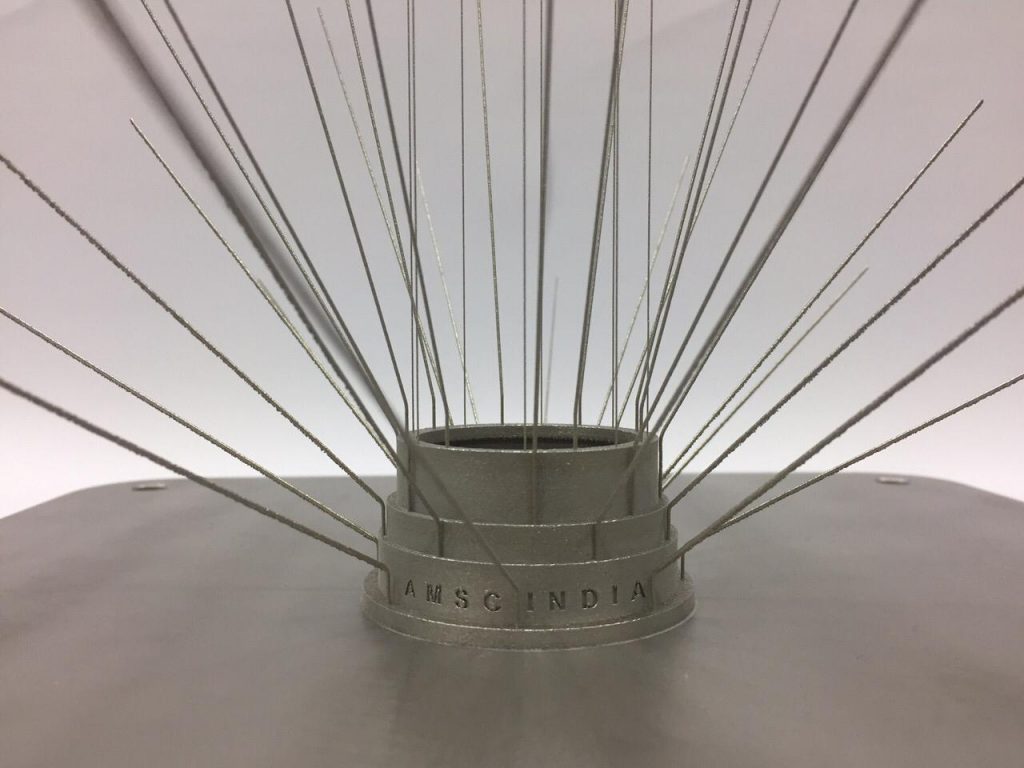
Accelerating innovation with Markforged
Rounding off the 3D printing focused series of talks, Greg Mark from Markforged spoke about how innovation in 3D printing is now more about the bottom line value. With a photo of an archetypal machinist, affectionately referred to as Frank, Mark explained how waiting for custom tooling or part orders creates a bottleneck for many manufacturers.
With Markforged 3D printers, manufacturers can break such bottlenecks are 3D print functional, durable parts. Mark explained that many automotive factories are using Markforged 3D printers for this very purpose, producing tooling in carbon fiber for daily use.
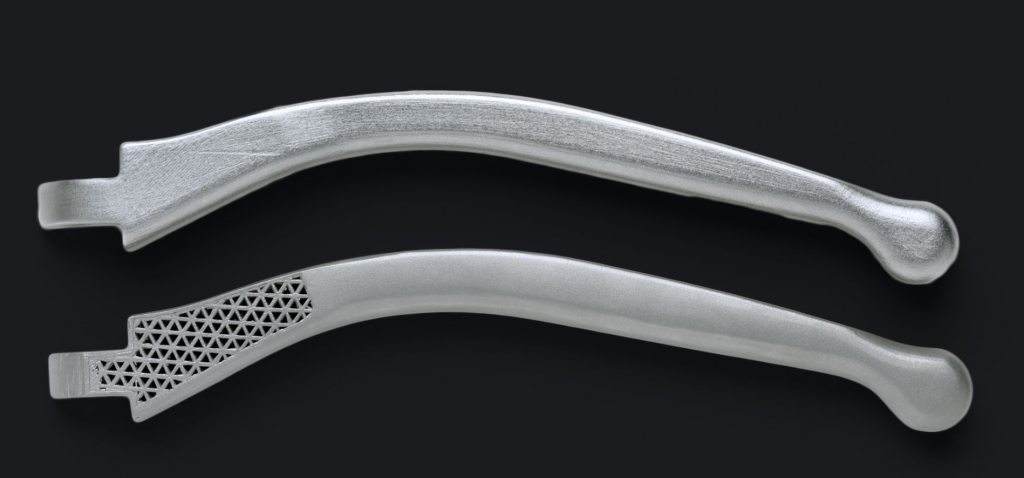
Speaking about the forthcoming, and highly anticipated, Metal X 3D printer Mark explained that the past 4 years of experience have provided some valuable lessons on working with non-standard FDM materials. He says, “we use hardened everything” referring to the extrusion of carbon fiber enriched 3D printing materials.
I also got a chance to inspect a metal 3D print from the Metal X, and it was impressive. To see a metal part from an FDM machine that was 99.99% solid was remarkable. The component Greg Mark showed me had also been drilled so it was possible to see how the part was fully sintered internally with no visible porosity to the naked eye.
And while we at 3D Printing Industry have yet to see the Metal X in action first hand, its becoming increasing clear why Markforged has the attention of heavyweight, industrial end users.
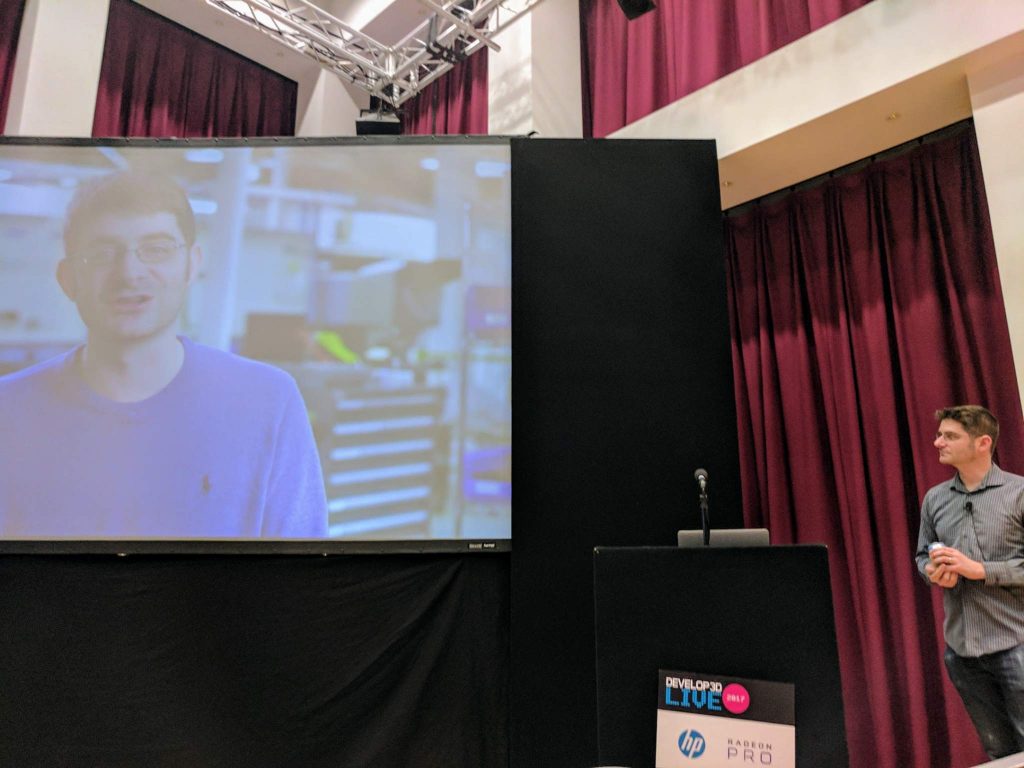
Users who want to hit the ground running when the Metal X is released this Autumn can get up to speed now by purchasing a Markforged Onyx One, Onyx Pro or Mark Two. Currently, Markforged will take off the full price of the plastic printer from your Metal X purchase.

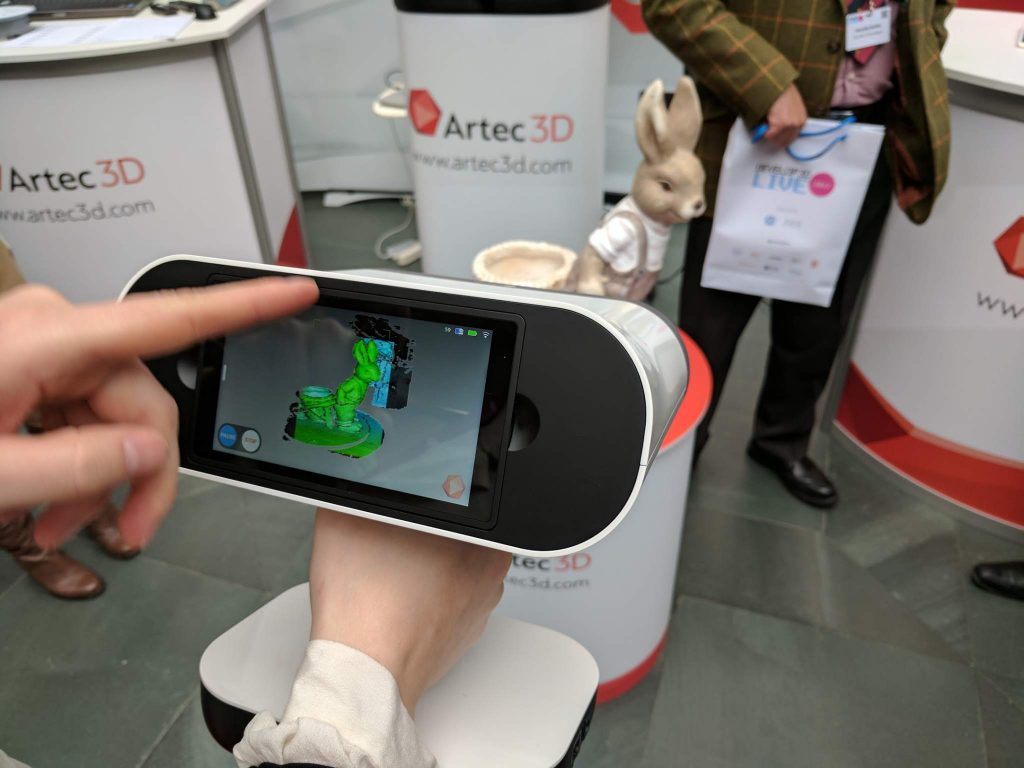
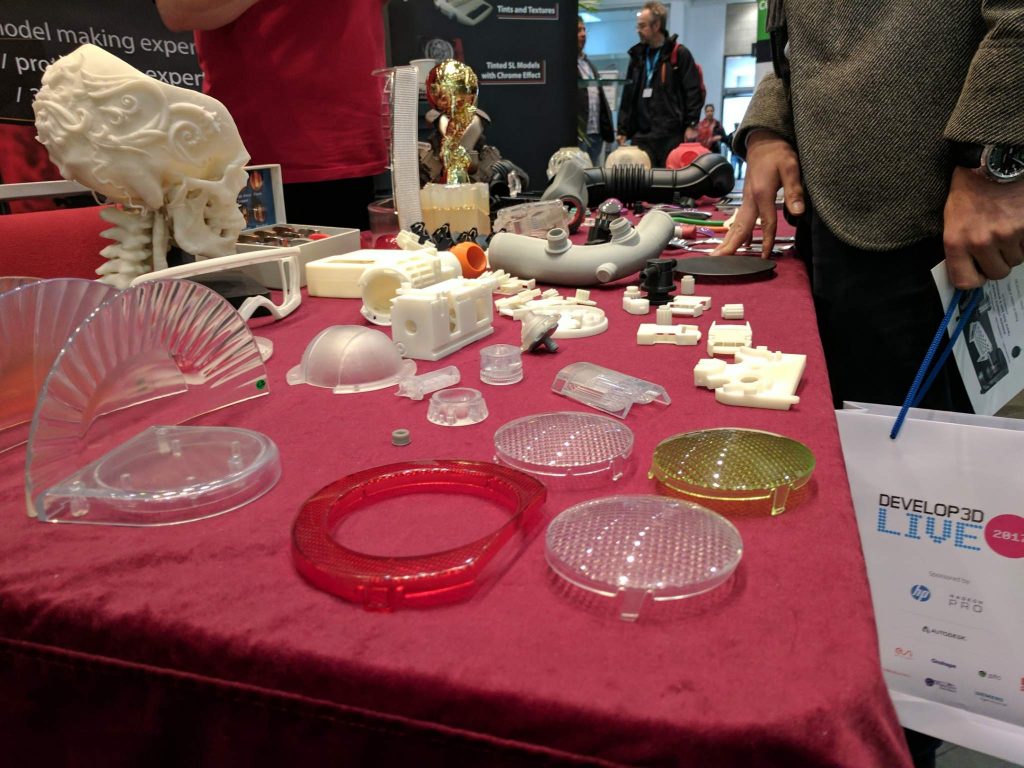



To stay up to date with the latest 3D printing news from events around the world, sign up to the 3D Printing Industry newsletter, follow us on Twitter and like us on Facebook.
Also, we’re inviting readers to vote for any of the companies mentioned in this article, or others, in our first annual 3D Printing Industry Awards.
Featured image shows the opening of Develop 3D Live. Photo by Michael Petch


